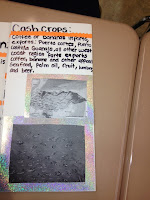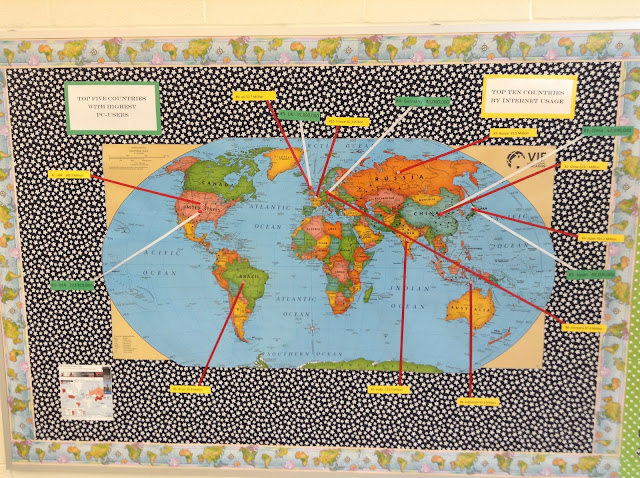Are "pictures worth a thousand words"? Yes, sometimes there are. During my first year of teaching, my seventh graders completed a novel unit for Journey to Jo'Burg by
Beverly Naidoo. This story is set in South Africa during the time of Apartheid. I really wanted my students to get a feel for the culture and to my advantage, my school just happened to have a "Visiting International Faculty" or "VIF" member from South Africa.
-I love it when all of the pieces fall into place.
Anyway, I partnered with her so that my lessons on culture and government would be as authentic as possible. She provided me with lots of resources and even invited my students to her class. Her room can only be described as "
breathtaking." I mean, it was like literally stepping into South Africa. You could just feel South Africa all around you; and to top it all off, she was dressed in traditional African attire. She spoke to the students in English as well as in her native language.
I thought that the lesson was going well, but then something,
or I should say someone, caught my eye. One of my boys had a strong expression of disinterest on his face. I knelt down beside him to ask him what was wrong. He told me that I had lied to him. I'm thought to myself,
"WHAT!?" So I asked him to explain himself. He said that I had told them that they were going on an in-school field trip, venturing to South Africa, and the best part was that their guide was going to be someone from Africa.
See, the problem that this student had was that the VIF teacher was,
in his eyes, a white lady. He could not see passed her complexion. But, she was in fact, South African. This, of course, led to a history lesson.
This whole experience really opened my eyes to the realization that our students need to "see" what and where they are reading about. Simply reading about it is not enough.
To make global connections in my classroom, I map out the places we are studying. This shows the students exactly where we are in relationship to the setting of text.
Right now, my Language Arts classes are studying how children live around the world. They are reading a nonfiction text titled
A Life Like Mine, distributed by UNICEF.
As we meet children from different countries in our reading, we locate and pin point them on our map.
Through this activity, my students are able to make connections to the children and to the information that they are gathering from the text. Oh, and did I forget to mention that by doing this, students are using Social Studies skills across content areas. YAY!
Don't limit the MAPPING idea.
Here is the same concept, but the focus is Central America; culture, government, population, religion, landmarks, and landforms.
My students created over sized brochures. One for each of the 7 countries in Central America.
My very good friend Mrs. Gaines, who teaches K-5 Art, has utilized mapping in her class as well. As they study different parts of the world, they create culturally inspired pieces of art. Mrs. Gaines has even "kicked it up a notch," by making a bilingual Word Wall. This is what I call "Global Greatness!"
Mrs. Wright has also joined in the revolution. In her computer lab she created a connections map to show the students PC and Internet usage around the world. So COOL!




















